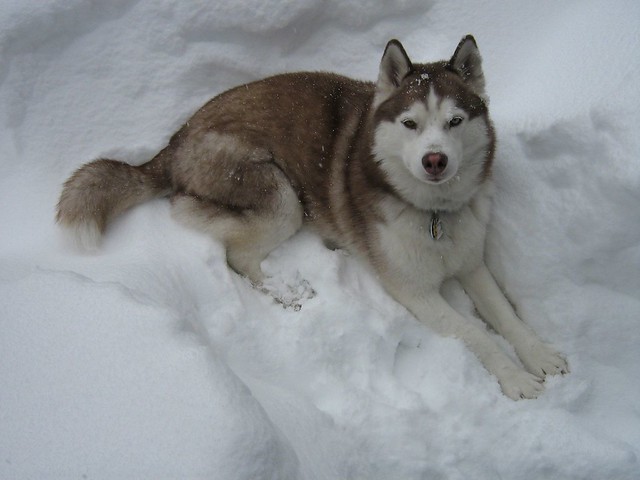
I know that you really do love your Husky. After all your husky is loyal, loving and your best friend. Of course, you want to make sure that your Husky is as healthy as possible. There are numerous ways that you can make sure that your husky is healthy. Good nutrition is the cornerstone of your husky's well-being and has the greatest influence on how long your friend will remain with you.
It is scientifically proven that if a husky is fed the wrong type of food over an extended period of time, they will become depressed and lethargic. You need to do your homework about what is best for your husky to eat. This will ensure that they enjoy life to the fullest.
Key Points to Consider with Husky Feeding
Although it may cost a little more, selecting high-quality pet food for your dog will add years to their life. Basic Vitamins and Essential Minerals are the two key aspects of a husky's nutrition.
Combining these two ingredients with a diet that your husky enjoys is a challenge but the results are well worth it. Nutritional supplements are also worth considering. Glucosamine and fish oils have become popular in order to combat arthritis and skin ailments. These supplements are not compulsory for your husky but they are definitely worth speaking to your local vet about it.
The Results of Good and Bad Nutrition
Your husky's energy levels will go up or down depending on the quality of their diet. If your dog is lacking the required nutrition you may notice them becoming lethargic. Huskies are very active dogs and you need to keep this in mind when feeding them. Although they eat relatively little once they are fully grown, make sure what you do give your husky is dense in basic vitamins and essential minerals.
Other Benefits of Good Husky Feeding Habits
The better quality the food that you feed to your husky, the more they will take into their system to sustain their health. What this means for you is that there will be less excrement around your yard to clean up. This is a big bonus for any husky owner. The consistency of your huskies poop is a very good indicator of the quality of their diet. You want your huskies poop to be firm but not too hard or soft.
The Risk of Obesity
Obesity can affect your husky just the same as it affects people. Along with regular exercise, a good diet is essential to make sure your husky stays within a healthy weight range. Use treats sparingly and only for training purposes. Treats soon add up and they can lead to serious health problems if your husky is overeating.
Avoiding Allergies
If your husky has been suffering from a mystery ailment then a change of diet may be just what the doctor ordered. There is the possibility that your husky is allergic to something that is inside their regular pet food. Keep in mind that diet affects every part of your dog's life. Monitor their nutrition constantly and maintain annual checkups at the vet.
The Benefits of a Healthy Diet
You will certainly notice that your Husky's coat will have a great shine with good nutrition. Combine this will good grooming and not only will your husky feel great, but they will also look great.
A healthy mouth is another byproduct of good husky feeding patterns. Dry food is very good for polishing and sharpening your husky's teeth. On the other hand, all the preservatives and sugars in canned food can cause plaque and tartar build-up.
Think Holistically With Husky Feeding
The saying 'you are what you eat' definitely applied to your husky. Everything from the skin condition, coat, teeth, weight and psychological well-being is affected by nutrition. Consult with a vet and experience husky breeders when making choices about husky feeding.
- By Kurt Tully - Article Source: EzineArticles


















